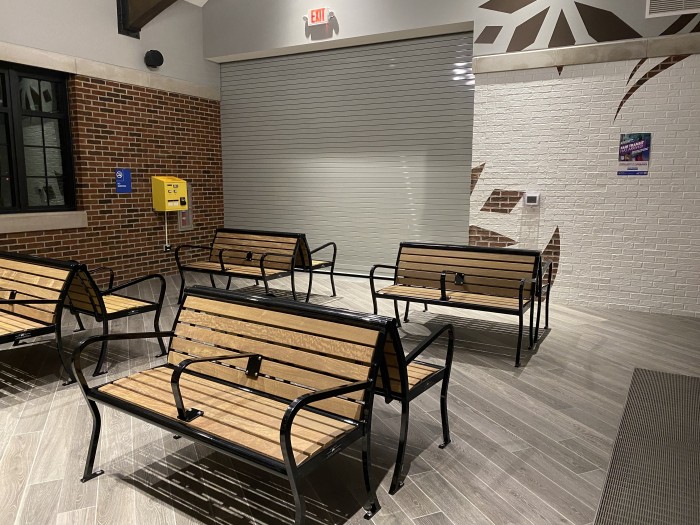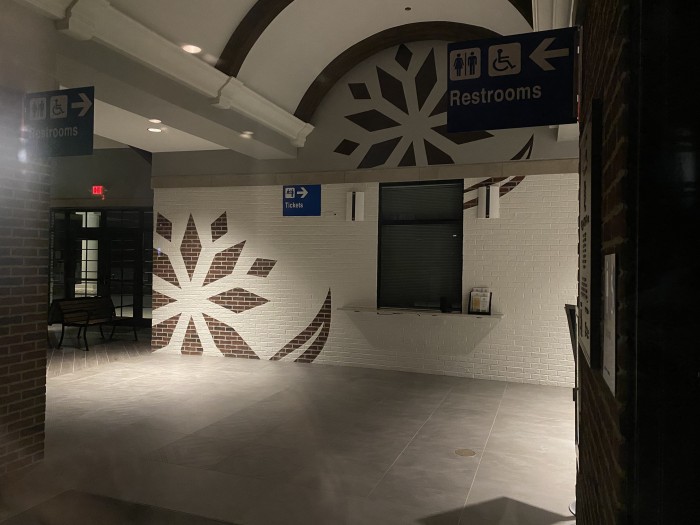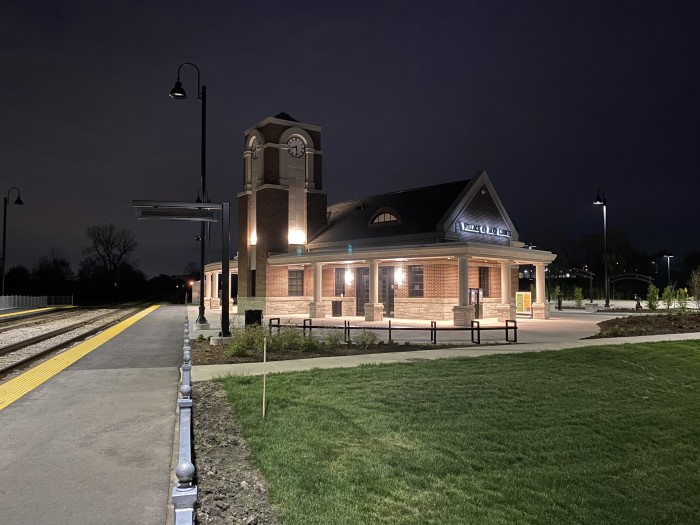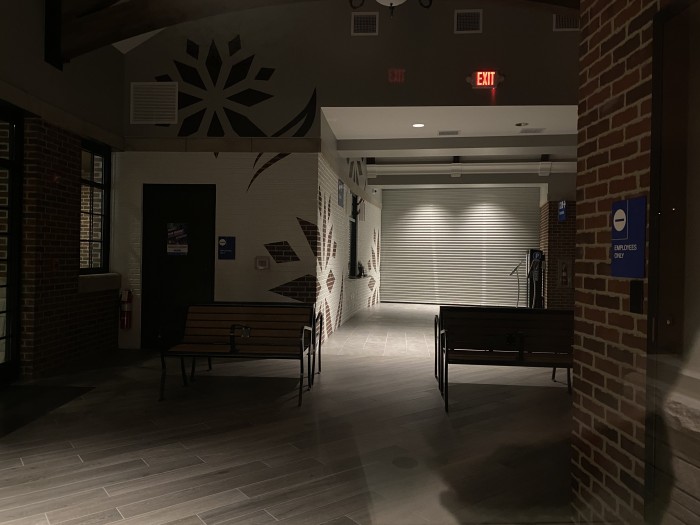-
Posts
1605 -
Joined
-
Days Won
51
Pace831 last won the day on November 21 2020
Pace831 had the most liked content!
Reputation
336 Top Contributor
Recent Profile Visitors
7846 profile views
-
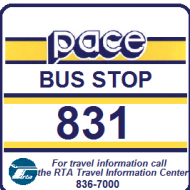
South | Southwest | Heritage Divisions - Changes & Restructuring
Pace831 replied to Busjack's topic in Pace Suburban Bus
I went by the new Harbor Freight warehouse in Joliet, and the building to the south of it which will be leased by Walmart. They both have bus turnarounds similar to the ones at Mars and CTDI. I haven't heard anything about new bus service, but it's good to see that the facilities are designed with transit use in mind. -
I went through Ogilvie several times since they set up the inspection booths. Half the time, there was nobody in the booth at all. The other times, I was waved through after showing a paper ticket which they did not punch.
-
Rock Island and BNSF have bike cars now, and there are plans to add them on Electric and Union Pacific lines. 7787 is one of the RI cars.
-

Chicago Transit Forum: Bugs, Feedback, Questions
Pace831 replied to Kevin's topic in General Transit Discussion
Confused and Sad aren’t positive reactions, so I don’t see why they should add to one’s reputation. Having more reactions available encourages quantity of posts over quality. I also don’t think there should be a downvote button because that discourages people from discussing why they disagree. So, the system is fine the way it is. -
Switcher 1 is for sale
-
Two Highliners are available for sale from Hoosier Valley Railroad Museum.
-
Generally speaking, a distribution center ships goods only to a company's own stores, while a fulfillment center is a third party that a seller contracts with to ship to individual customers. However, these aren't precise definitions and the terms are often used interchangeably. My best guess would be that Amazon's "distribution centers" are either loosely termed or are sort centers which ship to other Amazon facilities. It also looks like Amazon is planning to open grocery stores in Philadelphia, so the DCs may be used for that. This answer is complicated by the fact that some buildings have multiple functions. For example, Joliet and Channahon are both fulfillment and sortation centers. The facility is at the southwest corner of Steger Road and Central Avenue, about two miles northwest of the station. My bet would be a shuttle between the station and Amazon, not connected with other routes. The only question is whether Pace or Amazon will operate it. The latter might be more likely here due to the short distance compared to 360 and 361.
-
Most of the Amazon facilities around here are fulfillment centers, including Monee. Those are where inventory is processed and shipped to customers. Amazon has recently added new facilities in Aurora, Bolingbrook, Crest Hill, and Channahon. Neither the Tribune nor the Metra press release mention how the last mile connection will be made. Will Pace create a new route or will Amazon run their own bus from University Park station?
-
Anywhere that is urban enough to have a subway or light rail line will likely have a bus route within 1/2 mile or so, even if it's not a feature of the development. Subway and light rail could also be considered local services, unlike commuter rail. Some level of local transit is what makes TOD effective compared to the pseudo-TOD of the suburbs. I would bet that most successful examples are built around a rail station with at least one full time bus route. I've never heard of any TODs that are served exclusively by buses. Overall, it sounds like we are mostly in agreement.
-
Assuming that the goal of TOD is to minimize car use, why do you think that? If the only transit available is commuter rail, I don't see how the development would attract many people other than those who work traditional hours in downtown offices. Local bus service allows access to a wider variety of jobs and reduces the use of cars for non-work trips.
-
SWS crosses the RI on an overpass about a quarter mile east of the New Lenox RI station. However, the nearest SWS stop is two miles south at Laraway Road. The village owned the land in the southwest quadrant of the junction until a few years ago. Had they not done that, they could easily have built a station that serves both lines. Arlington Heights started a trend where any new apartments near the Metra station are called “transit-oriented development”. That’s not an appropriate term when the target demographic rides Metra to work downtown and uses a car for everything else. Essential elements of TOD include local bus service, nearby retail, and mixed-income housing. I suppose the Walmart counts as nearby, but this shouldn’t be called TOD when it lacks the other two things.
-
I'm not sure. Most suburban stations have electronic locks that close shortly after the last inbound train, which is what I was expecting to find here. The old station used to be locked when the ticket office wasn't open, except during winter. That won't matter once the 75th Street connector is built, which will divert the SWS to LaSalle Street Station. Still, it would have been better to retain the ability to build a SWS station here. They're investing in something that will be used for decades and you can't always predict how travel patterns will change. My other gripe is that the proposed "transit-oriented development" at this location will be high-end apartments when they ought to be mixed-income.
-
The title of the report is at the top of the image: Northwest Corridor Alternatives Analysis. You found Phase II of that study, but Phase I doesn’t seem to be available online. That’s the most likely source of the image. If you want to verify, you’d probably have to contact CTA, because reports prior to 2006 aren’t published on their website.
-
New Lenox station opened last month. The “conductor” greets people near the entrance: On both sides of the front doors are restrooms. The ticket office is under the clock tower: The east wing is the 24-hour waiting room. It is separated from the rest of the station by a rolling gate. I’m surprised they don’t lock it late at night to deter crime, but they do have surveillance cameras. The other side can potentially include commercial space, such as a coffee shop: Based on the curved design of the station, I was expecting the waiting room to be on the opposite side so that the windows would give people a view of the train approaching: The black kiosk along the wall is for the new parking payment system, where commuters enter their license plate number. The old system used numbered coin slots. One of the supposed benefits of the new station was to prevent outbound trains from blocking Cedar Road while stopped. However, the new stop isn’t far enough from the crossing to keep the gates from staying down. They should have built it even farther to the east instead of selling that property to a housing developer. That would have solved the crossing issue and allowed for a potential future stop on the SWS.
-
Given the time of day (8:56 PM) and location (11th and State), it would have been the last southbound trip of 834.


